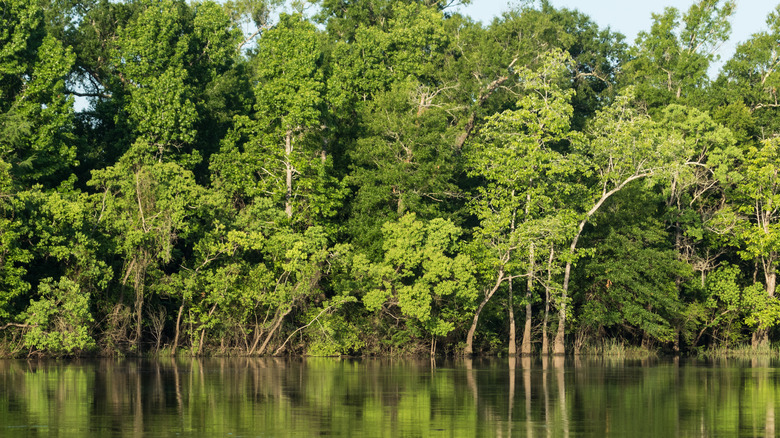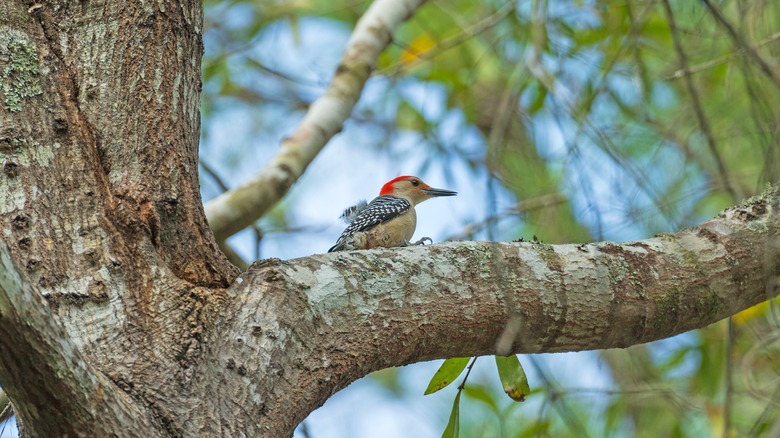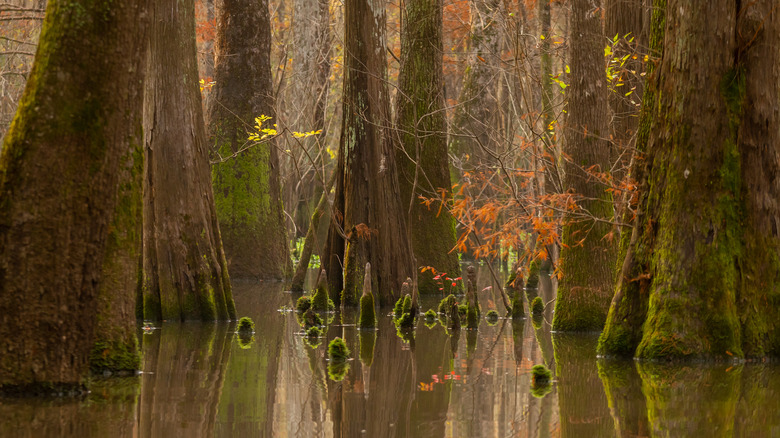One Of Texas' Most Underrated National Sites Is Full Of Cypress Trees And Diverse Wildlife
We may receive a commission on purchases made from links.
Texas is home to an impressive number of state parks, national parks, and preserves. From Inks Lake State Park with its clear waters to Monahans Sandhills State Park's desert landscapes, there is something for everyone to enjoy in Texas. However, those wanting to avoid crowds and admire wildlife can't go wrong with Big Thicket National Preserve in the state's southeastern region.
Big Thicket National Preserve has been a site of ecological importance since it was established back in 1974. Biologically diverse and occupying over 113,000 acres of Texas' Piney Woods region, the site celebrated its 50th anniversary in 2024, a testament to its longstanding significance. Home to over 1,300 species of flora, more than 60 species of mammals, and over 60 kinds of reptiles — some of which are threatened and endangered — the preserve is rich in wildlife. Its varied ecosystems provide countless unique habitats that support the health and prosperity of its inhabitants. Be sure to check the preserve's current conditions page before planning your visit. Entry is also free, making it an ideal budget-friendly destination for people of all ages.
Admire Big Thicket's diverse range of bird and wildlife
The Big Thicket is a must-visit for wildlife enthusiasts. In 2001, the American Bird Conservancy designated the preserve as a Globally Important Bird Area, emphasizing its role in sustaining bird habitats and promoting ecological diversity. Among its 300 bird species, birdwatchers will be enchanted by the opportunity to spot fascinating species such as ospreys, warblers, egrets, and swallow-tailed kites. Birdwatching is best in the spring and winter months when birds come to nest and migrate. A copy of a "Birds of Texas Field Guide" will offer more in-depth information and guidance on how to make the most of your visit.
The preserve is also home to mammals such as otters, beavers, opossums, bobcats, and armadillos. Freshwater swamps house alligators, so visitors should exercise caution when near water. Alongside alligators, snapping turtles and venomous snakes are also present, so be vigilant, respect the habitat of the preserve's reptiles, and keep your toes out of the water. Big Thicket's abundant waterways are rich with fish too, attracting anglers interested in catching fish species like carp, catfish, and bass. A Texas fishing license is required to fish in the preserve. Luckily, if you need a license, you can buy one at Dick's Sporting Goods or Walmart in nearby Beaumont.
Given its vast scale — spanning seven counties — it's no wonder Big Thicket is so biologically diverse. In the 1980s, the preserve was granted International Biosphere Reserve status by UNESCO, highlighting its importance in studying the impact of human activity on the environment. The preserve's nine ecosystems, ranging from swamps to savannas and forests, allow nature to thrive. Big cypress trees are the most dominant tree species in the preserve, and several varieties of carnivorous plants can also be found here.
Enjoy Big Thicket's exciting recreational activities
Home to over 40 miles of hiking trails, Big Thicket offers visitors a chance to traverse diverse terrains, from uplands to sloughs and floodplains. The Kirby Nature Trail, spanning 2.4 miles, is a popular option for witnessing the majestic cypress trees that are such an iconic feature of the preserve's vast landscape. The Pitcher Plant Trail, covering 1 mile, is another favored route, offering a glimpse of the area's unique carnivorous plants. No matter which trail you take, insect repellent is a must — mosquitos are plentiful in the preserve due to the climate and can detract from the experience if you are unprepared.
Big Thicket's lakes, ponds, and creeks make it a favored spot for paddleboarding, canoeing, and kayaking. The preserve offers free paddle programs, where you can learn to paddle, canoe, or embark on a private kayak trip, each led by a ranger. There are three paddling trails to try, each taking you on a picturesque journey through untouched, rugged waterways. Routes range from a 4.8-mile round trip to an impressive 21-mile one-way excursion. Backcountry camping is available for those wanting a multi-day adventure, but obtain a free permit from the visitor center before staking your tent. For visitors who prefer not to camp, the city of Beaumont is only a 35-minute drive south from the preserve, offering convenient accommodation options. For more adventures in the outdoors, see our list of the best bird-watching destinations in the U.S.


